We have recently digitised a U-matic video tape of eclectic Norwegian video art from the 1980s. The tape documents a performance by Kjartan Slettemark, an influential Norwegian/ Swedish artist who died in 2008. The tape is the ‘final mix’ of a video performance entitled Chromakey Identity Blue in which Slettemark live mixed several video sources onto one tape.
The theoretical and practical impossibility of documenting live performance has been hotly debated in recent times by performance theorists, and there is some truth to those claims when we consider the encounter with Slettemark’s work in the Greatbear studio. The recording is only one aspect of the overall performance which, arguably, was never meant as a stand alone piece. A Daily Mail-esque reaction to the video might be ‘Eh? Is this art?! I don’t get it!’.
Having access to the wider context of the performance is sometimes necessary if the intentions of the artist are to be appreciated. Thankfully, Slettemark’s website includes part-documentation of Chromakey Identity Blue, and we can see how the different video signals were played back on various screens, arranged on the stage in front of (what looks like) a live TV audience.
Upon seeing this documentation, the performance immediately evokes to the wider context of 70s/ 80s video art, that used the medium to explore the relationship between the body, space, screen and in Slettemark’s case, the audience. A key part of Chromakey Identity Blue is the interruption of the audience’s presence in the performance, realised when their images are screened across the face of the artist, whose wearing of a chroma key mask enables him to perform a ‘special effect’ which layers two images or video streams together.
What unfolds through Slettemark’s performance is at times humorous, suggestive and moving, largely because of the ways the faces of different people interact, perform or simply ignore their involvement in the spectacle. As Marina Abramovic‘s use of presence testifies, there can be something surprisingly raw and even confrontational about incorporating the face into relational art. As an ethical space, meeting with the ‘face’ of another became a key concept for twentieth century philosopher Emmanuel Levinas. The face locates, Bettina Bergo argues, ‘“being” as an indeterminate field’ in which ‘the Other as a face that addresses me […] The encounter with a face is inevitably personal.’
If an art work like Slettemark’s is moving then, it is because it stages moments where ‘faces’ reflect and interface across each other. Faces meet and become technically composed. Through the performance of personal-facial address in the artwork, it is possible to glimpse for a brief moment the social vulnerability and fragility such meetings engender. Brief because the seriousness is diffused Chromakey Identity Blue by a kitsch use of a disco ball that the artist moves across the screen to symbolically change the performed image, conjuring the magical feel of new technologies and how they facilitate different ways of seeing, being and acting in the world.
Videokunstarkivet (The Norwegian Video Art Archive)
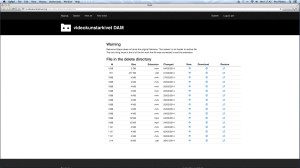
The tape of Slettemark was sent to us by Videokunstarkivet, an exciting archival project mapping all the works of video art that have been made in Norway since the mid-1960s. Funded by the Norwegian Arts Council, the project has built the digital archival infrastructure from the bottom up, and those working on it have learnt a good many things along the way. Per Platou, who is managing the project, was generous enough to share some the insights for readers of our blog, and a selection of images from archive’s interface.
There are several things to be considered when creating a digital archive ‘from scratch’. Often at the beginning of a large project it is possible look around for examples of best practice within your field. This isn’t always the case for digital archives, particularly those working almost exclusively with video files, whose communities of practice are unsettled and established ways of working few and far between. The fact that even in 2014, when digital technologies have been widely adopted throughout society, there is still not any firm agreement on standard access and archival file formats for video files indicates the peculiar challenges of this work.
Because of this, projects such as Videokunstarkivet face multiple challenges, with significant amounts of improvisation required in the construction of the project infrastructure. An important consideration is the degree of access users will have to the archive material. As Per explained, publicly re-publishing the archive material from the site in an always open access form is not a concern of the Videokunstarkivet, largely due to the significant administrative issues involved in gaining licensing and copyright permissions. ‘I didn’t even think there was a difference between collecting and communicating the work yet after awhile I saw there is no point in showing everything, it has to be filtered and communicated in a certain way.’
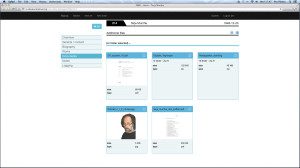
Instead, interested users will be given a research key or pass word which enables them to access the data and edit metadata where appropriate. If users want to re-publish or show the art in some form, contact details for the artist/ copyright holder are included as part of the entry. Although the Videokunstarkivet deals largely with video art, entries on individual artists include information about other archival collections where their material may be stored in order to facilitate further research. Contemporary Norwegian video artists are also encouraged to deposit material in the database, ensuring that ongoing collecting practices are built-in to the long-term project infrastructure.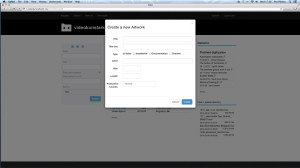
Another big consideration in constructing an archive is what to collect. Per told me that video art in Norway really took off in the early 80s. Artists who incorporated video into their work weren’t necessarily specialists in the medium, ‘there just happened to be a video camera nearby so they decided to use it.’ Video was therefore often used alongside films, graphics, performance and text, making the starting point for the archive, according to Per, ‘a bit of a mess really.’ Nonetheless, Videokunstarkivet ‘approaches every artist like it was Edvard Munch,’ because it is very hard to know now exactly what will be culturally valuable in 10, 20 or even 100 years from now. While it may not be appropriate to ‘save everything!’ for larger archival projects, for a self-contained and focused archival project such as the Videokunstarkivet, an inclusive approach may well be perfectly possible.
Building software infrastructures
Another important aspect of the project is technical considerations – the actual building of the back/ front end of the software infrastructure that will be used to manage newly migrated digital assets.
It was very important that the Videokunstarkivet archive was constructed using Open Source software. It was necessary to ensure resilience in a rapidly changing technological context, and so the project could benefit from any improvements in the code as they are tested out by user communities.
The project uses an adapted version of Digital Asset Management system Resource Space that was developed with LIMA, an organisation based in Holland that preserves, distributes and researches media art. Per explained that ‘since Resource Space was originally meant for photos and other “light” media files, we found it not so well suited for our actual tasks.’ Video files are of course far ‘heavier’ than image or even uncompressed audio files. This meant that there were some ‘pretty severe’ technical glitches in the process of establishing a database system that could effectively manage and playback large, uncompressed master and access copies. Through establishing the Videokunstarkivet archive they were ‘pushing the limits of what is technically possible in practice’, largely because internet servers are not built to handle large files, particularly not if those files are being transcoding back and forth across the file management system. In this respect, the project is very much ‘testing new ground’, creating an infrastructure capable of effectively managing, and enabling people to remotely access large amounts of high-quality video data.
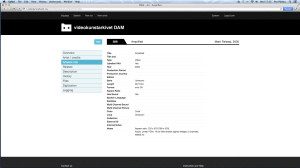
The interface is built with Bootstrap which has been adapted to create ‘a very advanced access-layer system’ that enables Videokunstarkivet to define user groups and access requirements. Per outlined these user groups and access levels as follows:
‘- Admin: Access to everything (i.e.Videokunstarkivet team members)
– Research: Researchers/curators can see video works, and almost all the metadata (incl previews of the videos). They cannot download master files. They can edit metadata fields, however all their edits will be visible for other users (Wikipedia style). If a curator wants to SHOW a particular work, they’ll have to contact the artist or owner/gallery directly. If the artist agrees, they (or we) can generate a download link (or transcode a particular format) with a few clicks.
– Artist: Artists can up/download uncompressed master files freely, edit metadata and additional info (contact, cv, websites etc etc). They will be able to use the system to store digital master versions freely, and transcode files or previews to share with who they want. The ONLY catch is that they can never delete a master file – this is of course coming out of national archive needs.’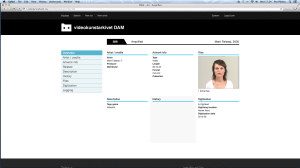
Per approached us to help migrate the Kjartan Slettemark tape because of the thorough approach and conscientious methodology we apply to digitisation work. As a media archaeology enthusiast, Per stressed that it was desirable for both aesthetic and archival reasons that the materiality of U-matic video was visible in the transferred file. He didn’t want the tape, in other words, to be ‘cleaned up’ in anyway. To migrate the tape to digital file we used our standardised transfer chain for U-matic tape. This includes using an appropriate time-based-corrector contemporary to U-matic era, and conversion of the dub signal using a dedicated external dub – y/c converter circuit.
We are very happy to be working with projects such as the Videokunstarkivet. It has been a great opportunity to learn about the nuts and bolts design of cutting-edge digital video archives, as well as discover the work of Kjartan Slettemark, whose work is not well-known in the UK. Massive thanks must go to Per for his generous sharing of time and knowledge in the process of writing this article. We wish the Videokunstarkivet every success and hope it will raise the profile of Norwegian video art across the world.

